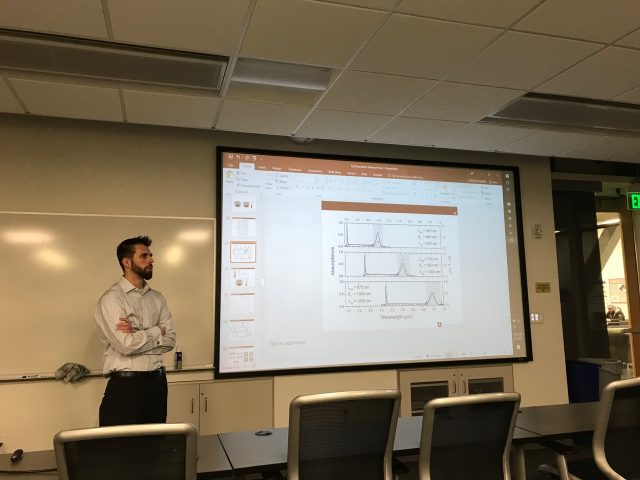Devon passed his doctoral dissertation defense titled: “Fundamental Studies of Engineered Electron Interactions in Micro/Nanoscale Optical and Thermionic Devices”
Photon interactions with electrons have led to devices engineered to improve industries in communication, energy, and sensing. Among the different types of devices, nanoantennas are particularly useful in these industries due to their spectral versatility achieved through a prudent selection of material, shape, dimension, and periodicity. Similarly, the exploration of thermal interactions with electrons has produced advances in energy harvesting, most notably in the form of thermophotovoltaics, thermoelectrics, and thermionics. Of the three, thermionics contains the most potential for high-temperature applications, such as concentrated solar collection. However, significant knowledge gaps remain in designing hybrid resonant photonic/electronic devices and in the modeling and setup of thermionically induced electron and photon emission, particularly across nanometer distances. As such, this dissertation is divided into three main topics: (1) the numerical study of hybrid photonic/plasmonic structures, (2) comprehensive electron and photon transport modeling of thermionic energy converters and (3) the design of a nanoscale thermionic experiment.
This dissertation begins with a literature review of each topic followed by a numerical model of an array of gold rectangular nanoantennas placed atop a novel 3D photonic crystal. Using Lumerical’s Finite-Difference Time-Domain Solutions software, the model identified conditions under which photonic/plasmonic coupling yielded an order of magnitude increase in concentrated, localized fields. Next, photon and thermal perturbations on electrons are presented with emphasis on sub-micron vacuum spacing between TE electrodes. Using MATLAB, a comprehensive TE model of photon and electron transport is presented which accounts for the effects of applied voltage, gap distance, space-charge, image-charge, electron tunneling, photon tunneling, surface roughness, and hybrid cycles. As a follow-up work, the necessary tools and components to experimentally validate TE power generation are designed and set up. The outcome of these studies provides a strong platform on which to expand scientific understanding of photonic and thermal interactions with electrons.


